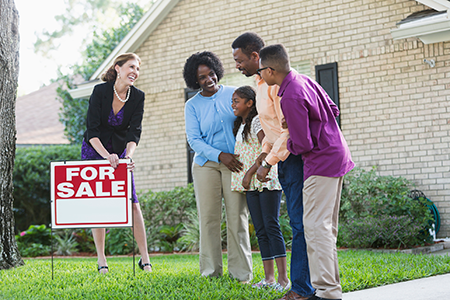Selling a property can be an exciting endeavor that creates a variety of possibilities for your next step. And while it’s obvious that a buyer needs to come up with a stack of cash for the transaction, the costs to the seller aren’t always so clear.
Completing a home sale can trigger various expenses for the seller, many of which are optional or negotiable and some of which are not. To be aware of how your bottom line may be affected, consider the following costs:
Sprucing up
To get top dollar for your home, it should look its best. Before listing a home, think about which areas need some TLC. If you’re working with a realtor, ask for recommendations on how to make a great first impression on buyers.
To get top dollar for your home, it should look its best. Before listing a home, think about which areas need some TLC. If you’re working with a realtor, ask for recommendations on how to make a great first impression on buyers.
One common quick fix includes painting. It can easily cost up to $2,000 or more, depending on how many rooms are in the mix and if the exterior needs a new coat, too. Window washing can run about $300, as can carpet cleaning. Regular lawn care and landscaping for curb appeal can also set you back $100 to $200 a month.
You may think about staging a home to improve chances for a strong offer. A home stager runs about $1,200 and will arrange furniture and accessories to create a neutral, inviting space that highlights the property’s best features.
Of course, costs for home stagers and other service providers will vary from market to market. Always request estimates from service companies before they begin work, or if you’re into DIY, add up the costs of any materials or supplies you’ll need.
Making repairs
While interior paint color and furnishings come down to personal taste and aesthetics, other elements of a home aren’t so easy to change or overlook. A leaky roof, dripping faucets or broken AC are problems that could impact livability and home value. To give buyers fewer reasons not to make an offer, fix any lingering issues.
While interior paint color and furnishings come down to personal taste and aesthetics, other elements of a home aren’t so easy to change or overlook. A leaky roof, dripping faucets or broken AC are problems that could impact livability and home value. To give buyers fewer reasons not to make an offer, fix any lingering issues.
Once you accept an offer on your home, the buyers can conduct a home inspection. If the inspection reveals other problems, you may need to pay to have them corrected before the deal can proceed, or you may be able to negotiate a lower sales price to have the buyers deal with it upon possession.
Paying closing costs
It can be a big relief to close on a long-anticipated sale, but there are more expenses to address before popping the cork on a bottle of bubbly to celebrate. First, the realtors’ commission will typically claim about six percent of the sales price and will be shared by both the buyer’s and seller’s agents.
It can be a big relief to close on a long-anticipated sale, but there are more expenses to address before popping the cork on a bottle of bubbly to celebrate. First, the realtors’ commission will typically claim about six percent of the sales price and will be shared by both the buyer’s and seller’s agents.
Next, if you took out a mortgage to purchase your home and were still repaying it, you’ll need to hand over your mortgage payoff, or the amount that you still owe your lender, and prorated interest. Additionally, some lenders may charge a penalty for early repayment, so review your original agreement.
Finally, numerous closing costs could apply, though you may be able to negotiate and have the buyer foot some or all of the bill. Such costs could include property and transfer taxes, fees associated with homeowner associations, attorneys, title insurance, escrow brokerage and couriers. Typically, the costs range from one to five percent of closing costs.
Getting prepared
In addition to your mortgage payoff, be prepared to spend about 10 percent of the sales price on closing costs, repairs and updates. By understanding which expenses you could be liable for in the home-selling process, you’ll have a better grasp of how much cash you’ll end up with for future plans.
In addition to your mortgage payoff, be prepared to spend about 10 percent of the sales price on closing costs, repairs and updates. By understanding which expenses you could be liable for in the home-selling process, you’ll have a better grasp of how much cash you’ll end up with for future plans.



